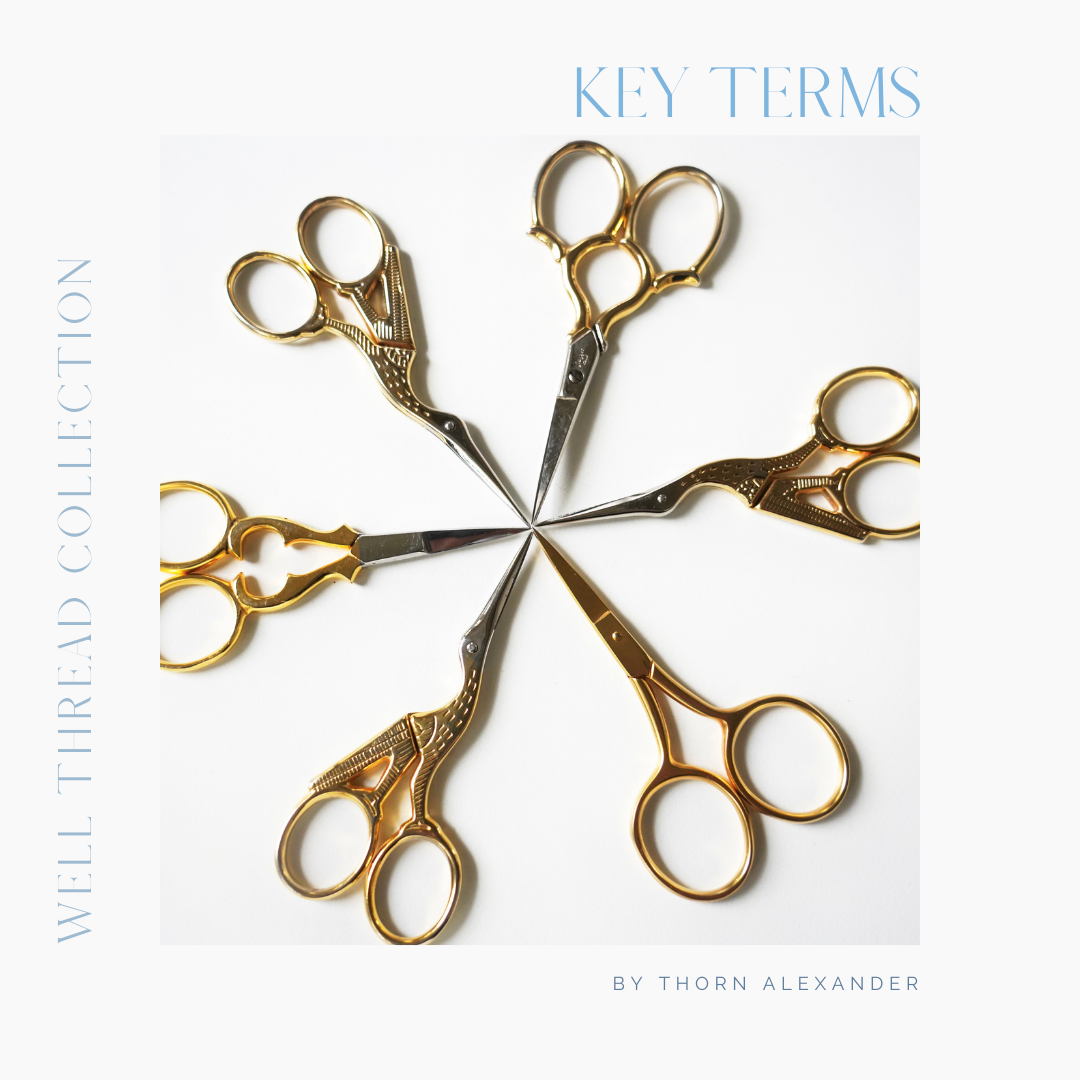Key Needlepoint Terms
What is a WIP?
Helping you decipher the beloved lingo of the needlepoint world
Bargello: A technique that was particularly popular in the 1970s. By stitching your thread in upright stitches in a zig-zag formation, the stitcher can create a chevron-like pattern in a variety of different colors. Not only is this a great way to go through your stash, this can be done on a blank canvas for little comparative expense.
Basketweave: This is a type of beginner stitch that is done in a way that the reverse side of your stitching is woven. like a basket. This is one of three of the beginner “tent stitches.”
Blocking: A process by which you dampen and pin a canvas face down on a “blocking board” This method allows you to realign your project in the event the stitching motions caused your canvas to warp. Needlepoint shops typically do all of my blocking and finishing, but you can definitely learn to DIY.
Compensation: When you are stitching with decorative stitches, sometimes you run out of room to do the stitch perfectly everywhere you need it, especially when you have lettering or other motifs, etc. It is advised that you fill in the background stitches as best you can and then go back and try to deliberate supplementary, shortened versions to make it look as if you had been able to continue up to the cut off point. When in doubt, use tent stitch.
Continental: Another beginner stitch! This stitch is done either horizontally or vertically and can be really helpful in combination with other. stitches to stitch around different shapes, filling in small sections or compensating. This is one of three of the beginner “tent stitches.”
Dye Lot: Every batch of fibers is identified by a number called the dye lot. This is worth keeping track of if you think you might run out of a color. Because different batches hold the dye differently, there might be a change in color from one dye lot to another. While I’m sure all of the companies have precise recipes for their colors, this is simply a matter of physics as no two fibers bond to compounds the same. Some are more noticeable than others.
Finishing: This is where the magic happens. This process is often carried out by a “finisher,” which really means a talented seamstress or tailor. Finding the right finisher can be tricky, but just about any Needlepoint Shop can help you. Some have their signature specialties while others can do it all.
Frogging Stitches or Ripping Out: This tedious task is crucial for getting the right colors, stitches, techniques. I spend lots of my time ripping out hard earned stitches just to make sure I get my project just right. Don’t feel defeated if you have to frog your stitches, it’s part of the process and consider working on another project in waves of taking breaks from ripping out your stitches.
Frame: This is often referring either an embroidery hoop or the more popular rectangular frame. Frames, when pinned to your needlepoint projects keep the canvas taught, reduces need for blocking and can allow the stitcher to use both hands when weaving the needle throughout the canvas. Some folks prefer to pin the frame on top of the canvas while others prefer to pin the canvas to sit on top of the frame.
In-hand: Referring to stitching off of a frame with your hands. Folks often roll up the corners of their project in order to tackle different sections of their stitching.
“LNS” is short for Local Needlepoint Shop
Needle Minder: Pictured in the top left photograph of a Ginger Jar. This Morgan Julia Designs needleminder has two attracting magnets that allow it to hold in place. These magnets are great for keeping track of your needles or small scissors. Just make sure to keep them away from electronics and credit cards.
Petit Point: A type of needlepoint that is done on what is called Penelope canvas. This canvas is almost like two layers of mesh interwoven so that you can have very small detail in some parts and larger stitches in others. It’s almost like a blank canvas that allows you to stitch in both 18 and 13 on one canvas.
Scooping: An old school technique where the stitcher weaves the needle through the mesh in a way that you skip the action of pulling the needle all the way down and then all the way up the weave. Instead, in one motion, you maneuver the needle to that you complete the stitch you’re working on and start the next stitch at the same time.
Skein: This is a unit of thread that you will find from many shops. It’s several yards of the preferred material that has been wound and twisted for easy storage and is just as easily unraveled and cut. While there are several ways to cut your threads, I always find that the length from your. middle finger. to your shoulder is best, if not a tad shorter
Waste Knot or Away Knot: A knot that is planted on top of the canvas when you begin a new project, strand, or section. This allows the stitcher to bind the tails in place without any mess or fuss.
WIPs: Work(s) in Progress


